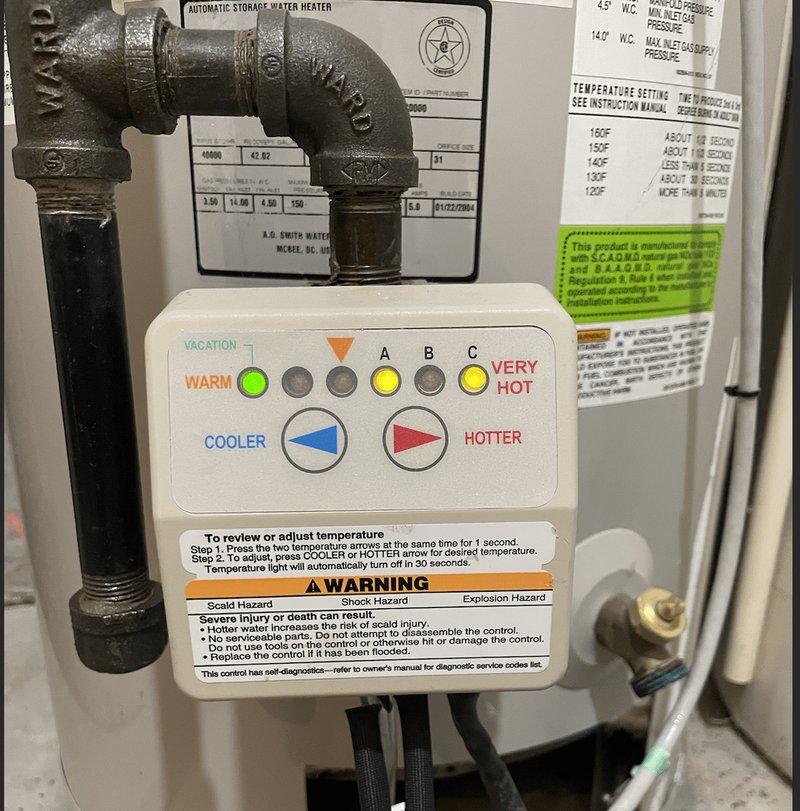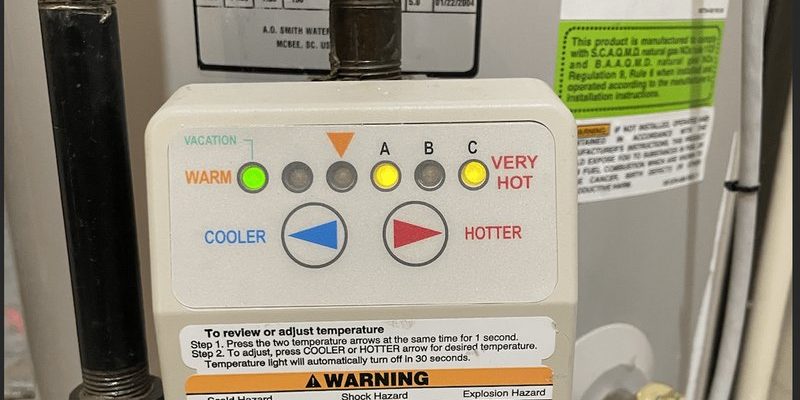
Here’s the deal: error codes are a way for your water heater to communicate that something isn’t quite right. Think of them as a cry for help, like a car’s dashboard light signaling a problem. The SE error code on AO Smith water heaters is no different. It’s a specific alert designed to catch your attention and prompt you to take action. Don’t worry if you’re not a tech wizard—understanding this error is easier than you might think!
Understanding the AO Smith SE Error Code
So, you might be wondering, what exactly does the SE error code mean? In simple terms, the SE code on an AO Smith water heater indicates a problem with the unit’s sensor. More specifically, it’s often related to the failure or malfunction of the temperature sensor, also known as a thermistor. This tiny component plays a crucial role in your water heater’s operation, much like a thermostat governs the temperature in your home.
Imagine the thermistor as a diligent guard, continuously monitoring the water’s temperature to ensure it doesn’t get too hot or too cold. Now, if this guard isn’t doing its job, your water heater loses its ability to maintain a stable temperature. You might end up with water that’s too hot, which can be dangerous, or too cold, which defeats the heater’s purpose. The SE code pops up to warn you about this malfunction, signaling that it’s time to investigate and restore balance.
Before you start panicking about a costly repair, it’s worth noting that this error isn’t necessarily a sign of a major breakdown. Often, it’s something you—or a professional—can fix relatively quickly. However, understanding what triggers this alert can save you time and stress, allowing you to decide whether it’s a DIY job or if you need to call in the experts.
Common Causes of the SE Error Code
Alright, let’s dig a little deeper. What causes the SE error code to appear on your AO Smith water heater? While it might seem like a pesky glitch, there are several reasons why this code could trigger. Often, it boils down to a few usual suspects that interfere with the sensor’s functionality.
First up, let’s talk about the sensor itself. Over time, wear and tear can cause the thermistor to degrade. Think of it like a pair of well-worn shoes that just don’t fit right after years of use. In this case, the sensor might not read the temperature correctly, which can lead to the SE error code. A faulty sensor might need replacing, similar to swapping out those old shoes for a new pair.
Another possible culprit is loose or corroded wiring. Just as a frayed phone charger struggles to connect, damaged wiring can prevent the sensor from communicating with the water heater’s control board. Environmental factors like humidity can accelerate this deterioration, particularly in areas where moisture is prevalent. Checking the wiring and making sure everything is tightly connected can sometimes resolve the issue.
Lastly, it’s important to consider the water heater’s environment. Extreme temperatures—the very thing our heaters are designed to combat—can sometimes play a trick on the system themselves. If your water heater is located in an uninsulated space, such as a garage or basement, it might be susceptible to ambient temperature changes that throw off the sensor’s readings. In such cases, installing proper insulation around the unit might help stabilize its environment and prevent future errors.
Steps to Fix or Address the SE Error Code
Once you’ve understood the potential causes of the SE error code, it’s time to take action. Now, don’t worry—it’s not as daunting as it might seem. With a bit of patience and some basic troubleshooting, you can often get your water heater back to its optimal performance.
Here’s what you can do: Start by shutting off the power to your water heater. Safety first! Once it’s off, take a closer look at the sensor and the surrounding wiring. If the sensor looks worn, or the wiring appears loose or damaged, these might be the culprits. Replacing a faulty sensor or tightening and cleaning the connections can frequently solve the problem. It’s a bit like tightening a loose screw or changing a light bulb—simple fixes that make a big difference.
If you’re comfortable with DIY tasks, you might feel confident tackling these steps on your own. However, if you’re unsure or if the SE code remains stubbornly lit, it might be time to call in a professional technician. An expert can help you troubleshoot further and ensure the repair is done correctly. Remember, it’s perfectly okay to seek help—in fact, it’s often the safest and most efficient route.
Once the issue is sorted, remember to turn the power back on and test your heater to ensure it’s operating smoothly. Keep an eye on it for the next few days to ensure the SE code doesn’t make another appearance. If it does, there might be a deeper issue at play that warrants professional attention.
Preventive Measures and Tips
You might be thinking, how can I prevent this pesky SE error code from appearing again? Good question! As with most appliances, a little preventive care goes a long way. Think of it like regular check-ups for your car or annual doctor visits—it’s all about maintaining good health and catching potential issues early.
Regular maintenance is key. Schedule routine inspections for your water heater to ensure all parts, including the sensor and wiring, are in tip-top shape. This proactive approach can help identify minor issues before they become major headaches. Additionally, keeping the area around the water heater clean and free from moisture can reduce the risk of corrosion and other environmental damage.
Another handy tip is to monitor the water pressure in your home. High pressure can strain the water heater, leading to a host of issues including sensor malfunctions. Installing a pressure-reducing valve, if necessary, can help maintain optimal pressure levels and protect your heater.
Lastly, consider your water quality. Hard water, rich in minerals like calcium and magnesium, can cause buildup in your heater, affecting performance over time. Installing a water softener or using descaling solutions periodically can help mitigate these effects, ensuring your heater runs smoothly for years to come.
In conclusion, while the AO Smith SE error code might seem intimidating at first, it’s simply your water heater’s way of asking for a bit of TLC. By understanding the code, addressing the root causes, and taking preventive measures, you can keep your water heater—and your home—running comfortably and efficiently.
